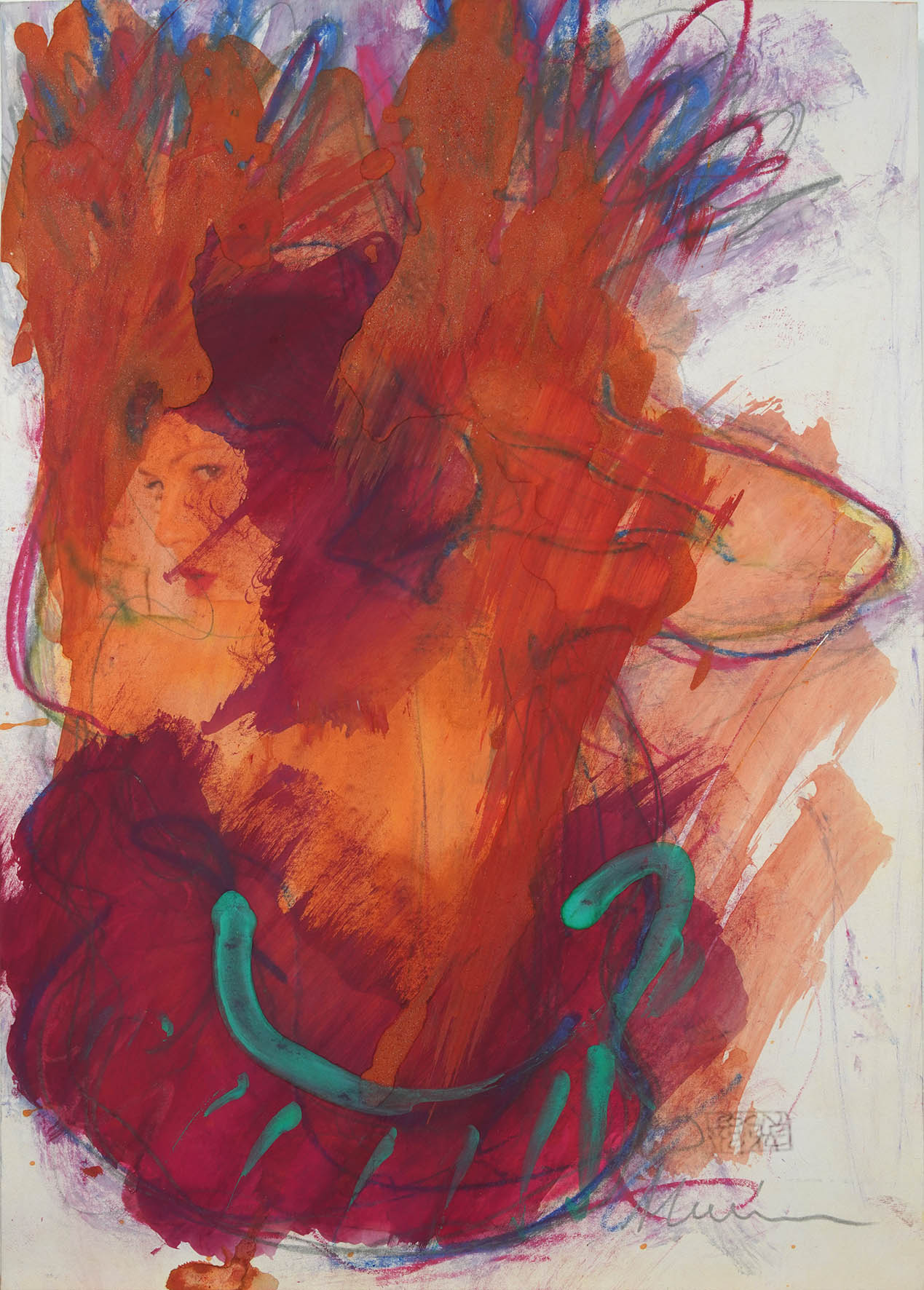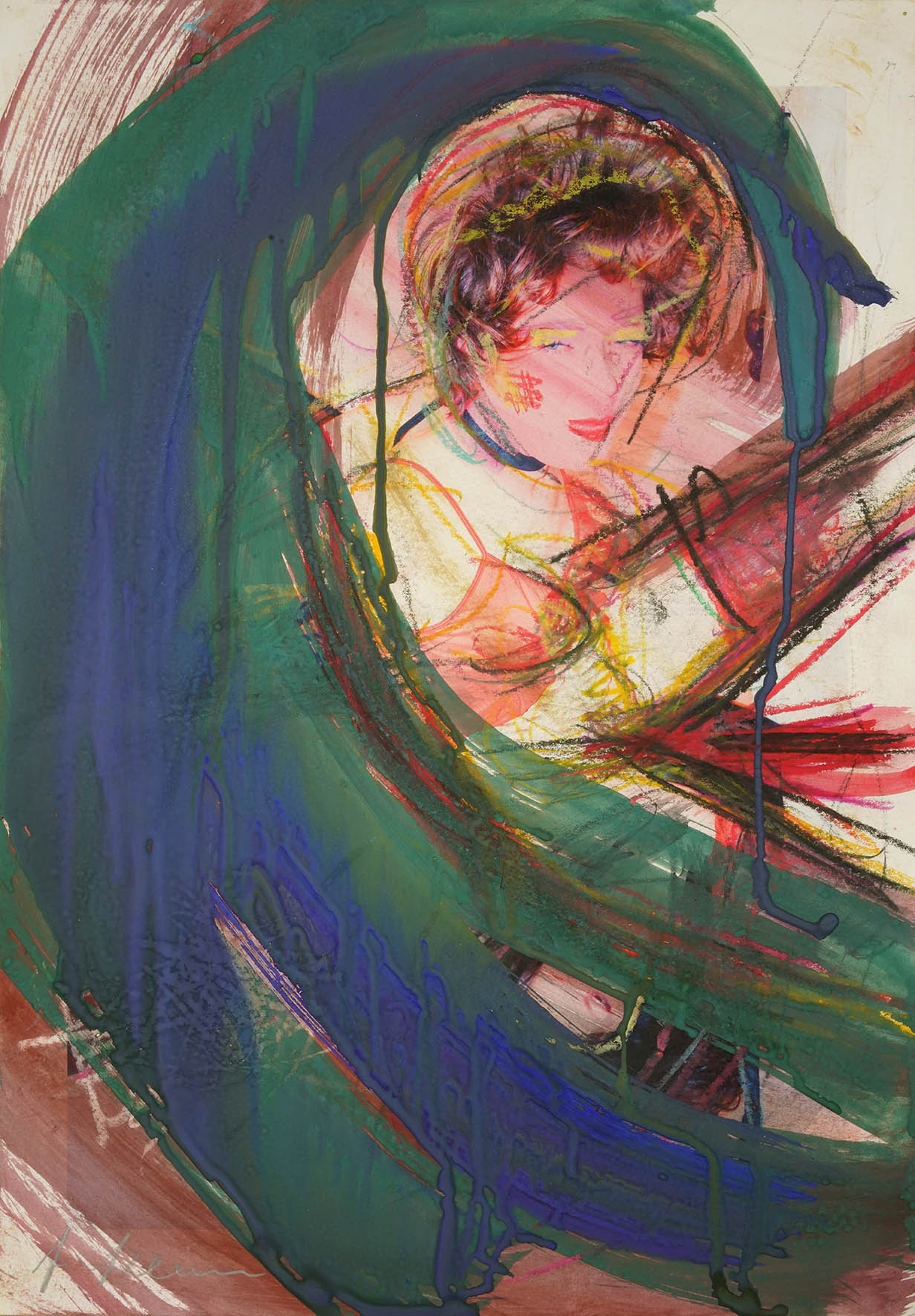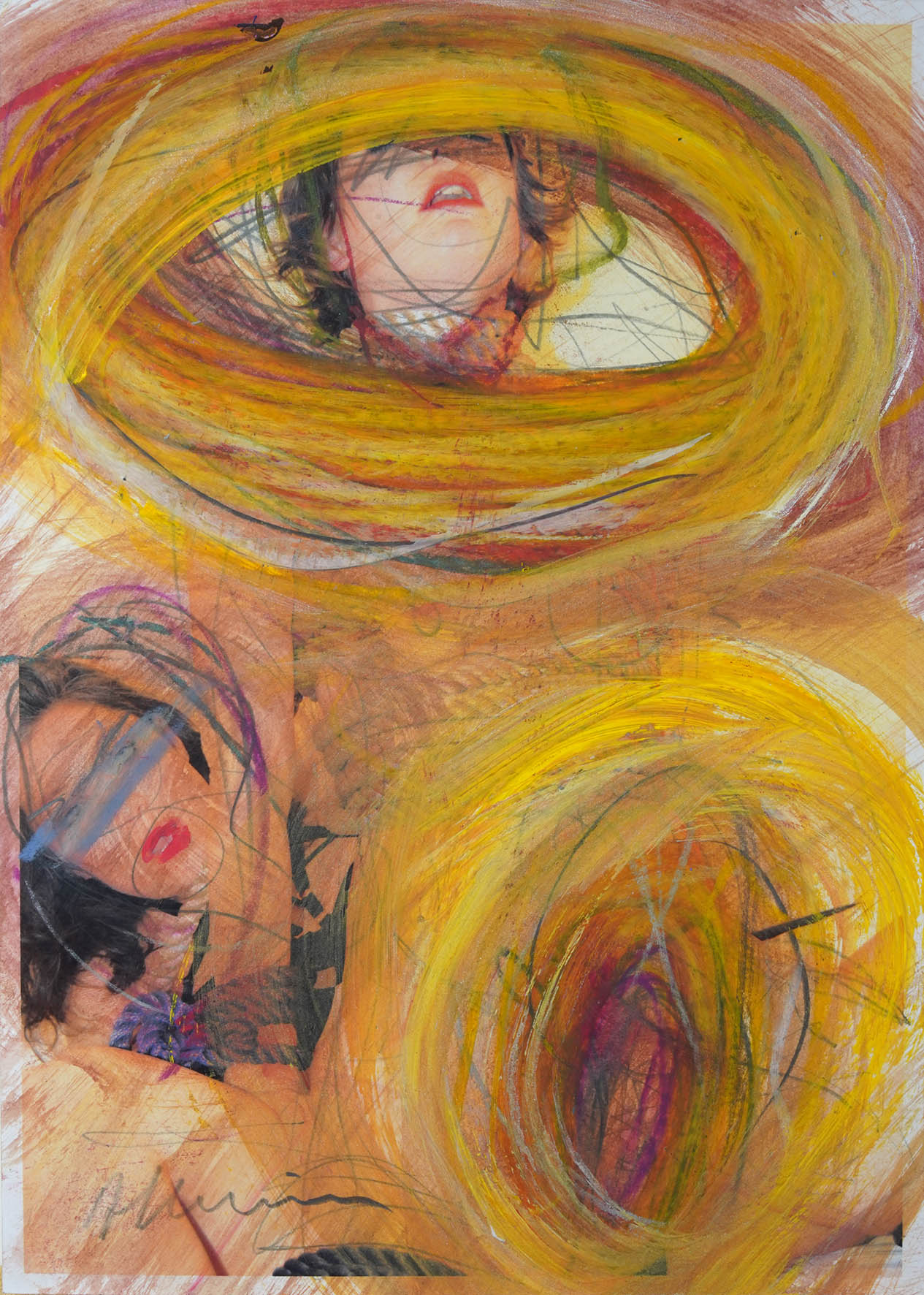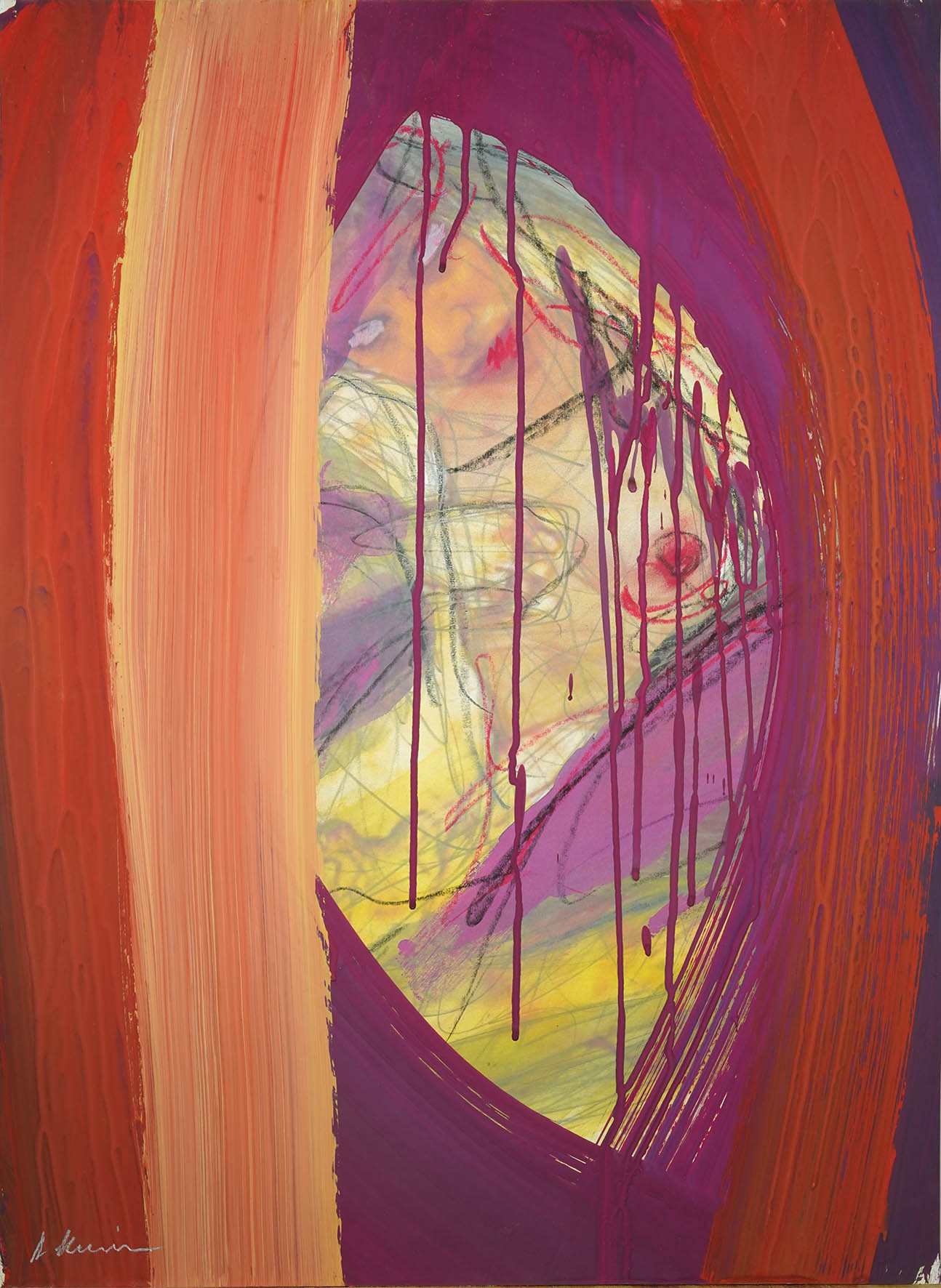ARNULF RAINER – NUDES
Opening Friday, 16th of December at 7pm at Gallery Reinisch Contemporary, Hauptplatz 6, 8010 Graz
Introduction: Manuela Schlossinger
The model of Arnulf Rainer, Sarah Gold, will be interviewed by Phillip Hochmeier
A book will be published.
„I would like to create a late work that looks completely different and radiates the softness and gentleness that we all get in old age“
Arnulf Rainer, 2015
Arnulf Rainer is one of Austria’s great artistic masters. His oeuvre, which has now spanned more than six decades, is a fixture in European art history. He is regarded as the founder of art informel in Austria and gained international recognition early in his career with his overpaintings. The aggressive reworking of photographs of his own body led him to expand the catalogue of human emotions in search of new or archaic possibilities of body language. An urgent desire that also formed the basis for many subsequent groups of works. While the existing work was erased in his early overpaintings, Rainer managed to expand the expression of his own body with the Face Farces and Body Poses. He radically continued his search in his series of death masks and finger paintings, thus creating a work complex by the end of the 1980s that is both uncompromising and consistent.
Starting in the 1990s, Arnulf Rainer became enthusiastic about old art, the early Italian Renaissance and the Dutch masters, whose works he reproduced as facsimiles and reworked in a completely new way. “I painted over the pictures not with aggression, but with sympathy and communication. I approached the confrontation through overpainting in order to creating a greater variety of expression.”
As early as the 1970s, Rainer turned to the female body in his work and produced overpaintings of old, trivial photographs of sports, eroticism and dance from the early 20th century. He entered into a dialogue with depicted subjects. The unfolding communication developed in such a way that the pictures began to tell the artist what they wanted and needed. “The traces of the dialogue are not only apparent as commenting accentuations, like in the old templates, but also carry traits of a complex, emotional confrontation, which is sometimes reflected through aggressively colourful energy in the revision.”
In the collections of works presented in this book by the Old Masters, as well as Klimt and Schiele from 2013, Rainer took this process one step further. Facsimiles were no longer used as templates, but rather motifs by artists such as Gustav Klimt, Egon Schiele, Paul Gaugin, Eduard Manet and others were reproduced using models, photographed and incorporated into the reproduction of the template. The European Cultural Centre, founded by Rene Rietmeyer, stood by Rainer for the long-term project, as did artists like Cy Twombly, Hermann Nitsch and Yoko Ono. The organisation opened up completely new possibilities for Rainer when preparing the templates with the help of Photoshop and not only assembled the templates according to the artist’s instructions, but also provided the models and photographers, and organized the trips to Tenerife, where the photo shoots were held in the artist’s studio.
What made this fundamentally different from previous revisions of old masters or female nudes was the active intervention in the motif through the direction and guidance of the photo sessions by Rainer himself.
This was not the first time Arnulf Rainer was in the director’s seat. Previously, when working with the German actor Bernard Minetti and the resulting exhibition Theater Minetti, he had, with some initial difficulties, called on an actor to give mimic, expressive depictions of emotions, which resulted in photos that Rainer then painted over.
Quite differently, however, the specifications of the old artworks resulted in a direction that Rainer was able to change or strengthen by instructing the photo models. He directed, selected snippets and directed the active interplay of motifs, models, photographers and graphic artists with regard to the selected work of the artist in question, whom he valued, in order to create an ideal template for his later dialogue with the picture.
While the naked or scantily clad female body was already immanent in works by Klimt and Schiele, for instance, the example of Georges de la Tour’s painting quickly demonstrates that Arnulf Rainer was very concerned with the possibility of actively eroticising profane motifs. A detail of the picture was chosen as a segment and a model with a provocatively opened jacket was manoeuvred into the right position to correspond to the pose of the protagonist in the painting. The resulting photo was integrated into the specified image section and formed the template for Rainer’s final intervention – the painterly intervention.
The extremely lively and vital colours of the majority of the works are particularly striking and reveal an energy and joy in the creative process that can be clearly felt when looking at the works as individuals.
He reacted to the templates with delicate streaks of paint, broad, overlapping brushstrokes and/or graphic interventions using graphite. He dresses them in colour, repeatedly emphasising contours and sometimes only allowing a glimpse of breasts and pubic hair through a veil of colour. The often almond-shaped segments that are formed when painting over with broad strokes create a voyeuristic perspective and emphasise what Rainer finds most important in the motif. With his creative intervention he responds to what the image requires, adding levels to the dialogue that it wants and needs. The painterly communication is energetic and dense or delicate and sensitive, and complements the work with the artist’s emotional component.
A similar approach, but completely unprecedented in art history, can be found in the Bondage series from 2014. While Klimt and Schiele or the Old Masters exude a noble eroticism, there is nothing subtle about this cycle. Rainer’s interest in the Japanese culture of bondage or shibari combined with the directed sexual acts of two female models manifested itself in a ruthlessly explicit series of works.
Sadistic and masochistic motif elements are mixed with the provocatively direct views from the picture and the passionately placed painterly interventions on the template. These interventions are frenzied and wild, the dialogue intense and expressive. The colour often wraps the protagonists in a passionate embrace, circling their faces and bodies until a violent vortex emerges, emphasising key areas and almost obliterating or obscuring others.
The direct planning and controlling of the photographic templates is not without precedent in Rainer’s work. However, what sets this series apart is its sheer intensity. The models react to Rainer’s stage directions and surrender themselves to the camera without inhibition. If the overpainting in the works of the Old Mastersseries was, to a certain extent, a dialogue with another artist, Rainer is delivering a soliloquy when creating the Bondage photos. No other master needs to be considered, only the product of his own creation enters into a dialogue with the artist. What stands out as the greatest contrast to Rainer’s famous early works is the positive approach, the creative drive, the will to deal with the self-made templates in a communicative way without the destructive, aggressive attack on the painting surface.
The existence and the unmistakable imagery of the Bondage series touch on several taboos at the same time. Some will find the explicit, sexual depictions too direct; others will resent the fact that an old man created works with young women. The clear intimate connotation of the passionate series suggests a sexual component, implemented with the casualness of artistic freedom, without which works like this would be impossible. If an artist expresses his sexuality through his works, any restriction of artistic freedom would amount to censorship. As early as 1984, Erwin Ringel reprimanded prudish Austrian society for its unhealthy approach to sexuality in old age. He cited the prevalent opinion that it was an age group “(…) that one would like to view as asexual or, as they say in Vienna, as “beyond good and evil”. Rainer is not an isolated case of a mature artist creating youthful, lustful and life-affirming works were created through extreme productivity.
What Arnulf Rainer has certainly succeeded in creating is a late work that is different.
In response to the possible conservative voices calling it the work of an ageing artist lacking self-criticism, one can retort that the same criticism made of artists such as Pablo Picasso and Francis Picabia for their erotic later work, until it was rehabilitated years later in extensive museum exhibitions.
Manuela Schlossinger






